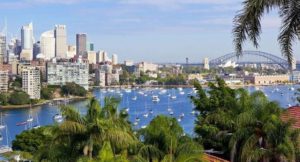While none of us know how long we’re going to live, believe it or not, the suburb you live where you live could make a big difference.
 Of course, we all know that life expectancy is influenced by things like lifestyle, genetics, and gender, but now new research shows that even your postcode can affect how long you’ll live.
Of course, we all know that life expectancy is influenced by things like lifestyle, genetics, and gender, but now new research shows that even your postcode can affect how long you’ll live.
Research by the Public Health Information Development Unit at Torrens University has flagged the suburbs and towns across Australia with the highest and lowest life expectancy.
Ashburton in Melbourne’s southeast and Unley and Parkside in Adelaide took the joint title as the Australian suburbs which have the highest median age at death, at 89 years old.
Meanwhile, on the other end of the spectrum, those living in Melbourne’s CBD have the lowest life expectancy among city areas, at just 59 years old.
However, the overall lowest median age nationwide was found in Australia’s regional areas of Newman in Western Australia, the APY Lands in South Australia, and the remote communities in Northern Territory.
Professor John Glover, from the Public Health Information Development Unit (PHIDU) at Torrens University, said various factors influenced residents’ lifespan.
“Variations in the median age at death between suburbs are impacted by many factors including socioeconomic disadvantage, as influenced by unemployment, education, housing, and income,” he said.
“Events like road traffic accidents among young people lower the median age, and the location of residential aged care facilities raise the median age.”
At the other end of the spectrum, people living in the more affluent suburbs tend to live longer
“They have good housing and make good choices about food and nutrition and diet,” said Professor Glover.
Australia’s life expectancy by state
Residents lucky enough to live in Sydney’s leafy hills district or on the northern beaches can expect to live the longest.
 Those living in Castle Hill, Cherrybrook (east), Glenhaven, Cromer, Collaroy, Narrabeen, Gordon, Pymble, and Killara have an average lifespan of 88 years, according to the new data.
Those living in Castle Hill, Cherrybrook (east), Glenhaven, Cromer, Collaroy, Narrabeen, Gordon, Pymble, and Killara have an average lifespan of 88 years, according to the new data.
Meanwhile, over in the affluent eastern suburbs, residents have an average life expectancy of around 82 years in Bondi and 85 years in Bondi Junction.
That’s still much higher than the life expectancy of 67 years which Sydneysiders living in Sydney’s CBD can expect – this includes Haymarket and The Rocks.
Melbourne’s affluent suburbs of Brighton, Brighton East, Camberwell, Surrey Hills (West), and Canterbury have a decent life expectancy of 88 years old.
And as we already know, those living in Melbourne’s CBD have the lowest life expectancy among city areas, at just 59 years old.
This is likely due to the concentration of homeless shelters and city accidents which would pull the average down.
Brisbane’s highest life expectancy can be found in the Centenary suburbs (east), and Chermside in the city’s north where the average age at death is 87 years old in each.
 Meanwhile, Spring Lakes has the lowest average life expectancy at just 57 years old.
Meanwhile, Spring Lakes has the lowest average life expectancy at just 57 years old.
In South Australia’s major city, lifespans are the longest in Adelaide’s suburbs of Unley and Parkside with a median life expectancy of 89 years.
Close behind were Colonel Light Gardens and Mitcham (where life expectancy is 87 years old) and the wealthy beachside suburbs of Brighton and Glenelg where residents live to an average 86 years old, according to the data.
Perth’s Manning and Waterford residents have an average life expectancy of 87 years, while the lowest life expectancy in Forrestdale, Harrisdale, and Piara Waters is much lower at just 62 years.
And there is a similar disparity between the lowest and highest life expectancies in Hobart.
Mount Nelson, Sandy Bay, and the South Hobart area have a life expectancy of 86 years, which is a stark contrast to the 67-year life expectancy in Bridgewater and Gagebrook.
But it is Australia’s top end which has the lowest life expectancy figures of anywhere in Australia, likely due to its large number of remote communities.
Darwin’s Casuarina suburb has the highest life expectancy at 76 years, whereas in the city center, people live to an average of 70 years.
Australian city suburbs with the longest life expectancy
Victoria: Ashburton – 89 years
New South Wales: Castle Hill, Cherrybrook, Glenhaven, Cromer, Narrabeen, Collaroy, Killara, Pymble – 88 years
 Queensland: Centenary East, Chermside – 87 years
Queensland: Centenary East, Chermside – 87 years
South Australia: Unley, Parkside – 89 years
Tasmania: Mount Nelson, Sandy Bay, South Hobart, New Town – 86 years
Northern Territory: Casuarina – 76 years
Western Australia: Manning, Waterford – 87 years
Australian city suburbs with the shortest life expectancy
Victoria: Melbourne CBD – 59 years
New South Wales: Haymarket, The Rocks – 67 years
 Queensland: Springfield Lakes – 57 years
Queensland: Springfield Lakes – 57 years
South Australia: Adelaide, Two Wells – 69 years
Tasmania: Bridgewater, Gagebrook – 67 years
Northern Territory: Driver, Gray, Moulden, Woodroffe – 62 years
Western Australia: Forrestdale, Harrisdale, Piara Waters – 62 years
Australian regional areas with the longest life expectancy
Victoria: Yackandandah – 86.5 years
New South Wales: Mayfield, Warabrook, Waratah, North Lambton – 86 years
 South Australia: Nuriootpa, Tanunda – 86 years
South Australia: Nuriootpa, Tanunda – 86 years
Western Australia: Albany – 85 years
Northern Territory: Alice Springs (town) – 66 years
Tasmania: Newstead, Norwood, Youngtown, and Relbia – 85 years
Australian regional areas with the shortest life expectancy
Victoria: French Island – 65 years
New South Wales: Maryland, Fletcher, Minmi – 69 years
Queensland: Mount Isa – 67 years
South Australia: APY Lands – 53 years
Western Australia: Newman – 45 years
Northern Territory: Alice Springs (remote) – 54 years
Tasmania: Quoiba, Spreyton – 69 years
from Property UpdateProperty Update https://propertyupdate.com.au/australian-suburbs-with-highest-and-lowest-life-expectancy/
No comments:
Post a Comment